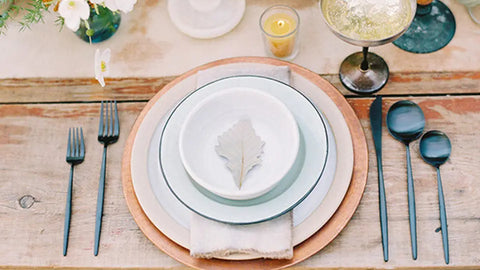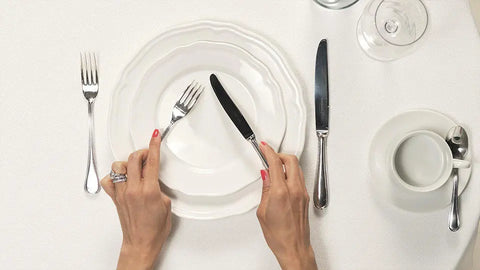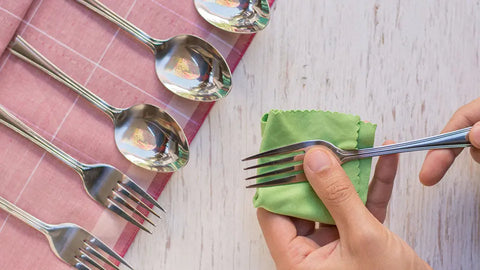The French are well renowned for their exquisite table settings, perhaps as much as their cuisine. A few essential things differentiate a French dining setting from any other. French people handle everything uniquely, whether we talk about the monogrammed fork, linen napkins or bread etiquette. Continue reading to discover some of the mysteries of the French dinner table.
Silverware
The silverware, particularly its placement, is an instantly recognizable feature of the French dining table. The forks are presented upside down to anyone who isn't French, with the teeth supported against the table. Initially, this was carried out to showcase the commonplace monogramming on the back. However, this holds true for French individuals even today.
Knife Rests
You can find knife rests as part of a unique silverware set in other countries as well, but they are trendy in the French culture. In France, unlike in other nations, the cutlery is kept between courses for all savory foods, and just the plate is changed.
Knife rests come in a range of themes and colors and give an aesthetic touch in addition to being utilitarian as they prevent used blades from soiling the tablecloth.
Bread-Etiquette
Bread is a must-have in France. However, it is surprising that the French do not use bread plates! Bread is provided in baskets and is meant to be placed straight on the table, believe it or not.
Furthermore, bread is used not only before but also during the meal. Even though butter is closely linked with French cuisine, it was not an accompaniment. Instead, bread was designed to be torn and eaten alone and with meals. The saucer is the French word for wiping your plate clean with your bread at the end of a meal.
Glassware
There will always be a glass of water on the French dining table, along with two or more wine glasses if you will be drinking different types of wine. If you're not used to it, the settings may appear busy, but everything is always attractive and serves a purpose!
Salad
Salads in France may differ from what you're used to; fresh, essential ingredients are preferred—often just greens and vinaigrette and are put in the best silverware. Larger leaves are ripped, not chopped, into bite-size pieces at a French meal; the knife isn't the right pick for salad ever!
Napkins
An excellent French dining table will contain linen napkins and antique ones large enough to lay the table with. They can span up to 30 square feet. Napkins in France are always fresh, clean, folded, and monogrammed. It's pretty stylish.
Course of Cheese
First and foremost, a great French dining table isn't complete without cheese! Unlike in other parts of the world, the beloved cheese dish comes last, just before or instead of a dessert in France. It's not only an excellent way to end a meal, but it's also an excellent reason to open another bottle of wine and persuade guests to remain longer. Hence, if going the French way it is best to always have a cheese knife from the best silverware brands like Inox at the table.
There should be a variety of different types and textures of cheese, with distinct regions earning additional points. With fresh fruit on the side, serve the cheese whole or as large wedges. In France, people do not serve crackers alongside cheese.



